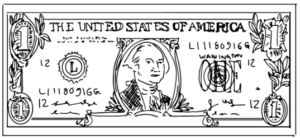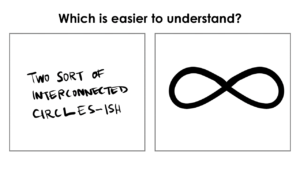Why use Illustrations?
I was thrilled to be asked to create some illustrations for a recent issue of the Journal of Museum Education. While not an illustrator by trade, I often use illustrations on the blog that I publish about issues in the museum field. Over the years, I have used pictures to help people understand museums’ lack of neutrality, the myth of diversity, and white privilege.

Why use images to deal with such heady issues? Images are, in some ways, the best way to handle the biggest issues in society. Our founding fathers understood the power of images. Most paintings of General George Washington show a plainly attired man looking out at the viewer; this is a man looking his constituents in the eye ready to serve them. Thanks to the dollar bill, almost every American can picture our first president, assured and capable. Can you picture him? Most likely, you can. This speaks to the incredible staying power of visuals. Images, like those of George, have the ability to capture viewers and remain in their consciousness. Illustrations, therefore, offer not only immediacy but also latency. What message doesn’t deserve this?

Not only do images have the power to stick in our consciousness, they also have the superior ability to tell stories. Art museums are full of images that tell stories better than any writer could. Almost every lead news story includes a photograph. Every person with an Instagram account understands how pictures can tell great stories (that don’t require reading captions). Images are processed by humans much more quickly than text (which needs to be translated in our minds) so we are able to jump into visual stories.
Finally, images often appeal more broadly than text. Social media pick-up is much higher when an image is attached. Videos are one of the biggest growing sectors in information dissemination, far outstripping print sources in terms of users.
Overall, images stick with people, tell stories fast, and appeal broadly. When the story you are trying to tell is challenging, you need to find ways that connect people to ideas quickly and effectively. Images help you meet your objective while also meeting the broadest set of readers. When the goal is to help people understand how to make the museum world better for women, femmes, and trans people, you need to use the most powerful tools available to you.
Seema Rao has worked in museums for nearly 20 years at the interstices of visitor experience, education, and technology. She heads Brilliant Idea Studio, a firm that helps museums develop the best experiences for all their visitors.

